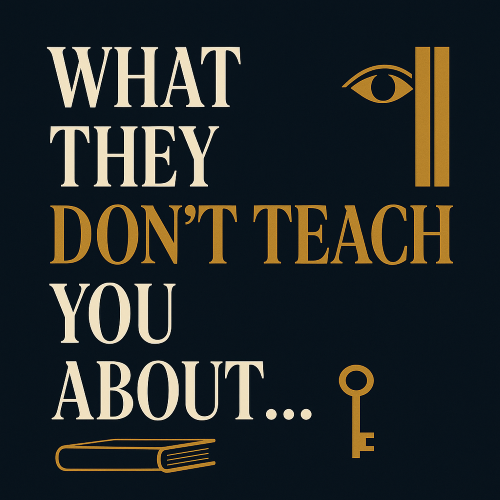What they don’t teach you about how the Left and Right are not fixed, but shift with history and power.

The concepts of "Left" and "Right" are not fixed or universal, but rather are flexible political labels that shift with historical context, power dynamics, and societal priorities. What was considered "left-wing" a century ago may be seen as "right-wing" today, and vice versa.
This fluidity is a key aspect of political history that is often overlooked in simplified discussions of ideology. The meaning of these terms is not based on timeless principles but is a product of specific historical conflicts and the dominant political questions of the era.
The French Revolution: The Birth of a Spectrum
The Left-Right political spectrum's origin is a prime example of this historical contingency. It began not as a set of ideological principles, but as a literal seating arrangement in the French National Assembly of 1789. Those who sat to the right of the president's chair were the supporters of the monarchy, the aristocracy, and the Catholic Church—those who wanted to conserve the traditional order. The so-called "Right" was a group formed to protect the status quo.
On the other hand, those who sat to the left were the revolutionaries, who sought to dismantle the old order and establish a republic based on liberty and equality. The "Left" was a group formed to demand radical change. This original divide was centered on the question of revolution versus tradition. It wasn't about economics, social welfare, or foreign policy; it was about the very structure of government and society.
The 19th and 20th Centuries: A Shift to Economics
As the Industrial Revolution reshaped Europe and North America, the meaning of Left and Right shifted dramatically. The central political conflict was no longer about monarchy versus republic, but about labor versus capital.
-
The Left as a Champion of Labor: The Left became associated with the rising socialist and labor movements. This new Left championed the rights of the working class, advocating for government intervention in the economy, social welfare programs, nationalization of industries, and the redistribution of wealth. In this context, the "Left" was defined by its opposition to the unfettered power of capitalism and its fight for economic equality.
-
The Right as a Champion of Capitalism: The Right, in turn, became the primary defender of laissez-faire capitalism. It championed the free market, opposed government regulation, and advocated for the protection of private property. In this new paradigm, the Right's role was to preserve the economic hierarchy that had replaced the old aristocratic one. What a 19th-century liberal would have championed—free markets and limited government—was now a core tenet of the Right.
This transition shows that the "Right" is not a static defender of a single set of traditions, but a force that adapts to defend the dominant power structure of the time. The Right of the French Revolution defended an aristocracy based on land and lineage; the Right of the Industrial Revolution defended a plutocracy based on capital.
The Late 20th Century: The Culture Wars and New Divides
In the latter half of the 20th century, particularly in Western democracies, the Left-Right divide began to shift again. As many of the Left's economic goals were achieved through the creation of the welfare state, a new set of issues emerged, centered on identity and social values.
-
The Left and Identity Politics: The modern Left increasingly became a champion of marginalized groups, advocating for civil rights for racial minorities, women, and the LGBTQ+ community. This focus on identity politics and social justice became a defining characteristic of the Left, sometimes at the expense of its traditional focus on class-based economic issues.
-
The Right and Social Conservatism: The modern Right, in response, became the primary defender of a new set of "traditions"—a romanticized version of the nuclear family, a specific religious morality, and nationalistic pride. It often used these social issues to build a new coalition, uniting working-class voters who felt alienated by the Left's cultural focus with wealthy elites who benefited from the Right's economic policies.
This latest shift demonstrates how power dynamics influence ideology. As the locus of power in society shifted from land to capital to cultural influence, the political parties adapted their platforms to reflect and protect the interests of their new patrons. The Left became the voice of a professional and cultural elite, while the Right successfully used populist rhetoric on cultural issues to serve its wealthy donors.
In conclusion, the Left and Right are not eternal categories with fixed meanings. They are fluid concepts that have evolved dramatically throughout history, reflecting the central political struggles of each era. From the monarchy of the French Revolution to the industries of the 19th century and the cultural battles of today, the meaning of these terms is in constant flux, shaped by the shifting tides of power, class, and social change.
- Questions and Answers
- Opinion
- Motivational and Inspiring Story
- Technology
- Live and Let live
- Focus
- Geopolitics
- Military-Arms/Equipment
- الحماية
- Economy
- Beasts of Nations
- Machine Tools-The “Mother Industry”
- Art
- Causes
- Crafts
- Dance
- Drinks
- Film/Movie
- Fitness
- Food
- الألعاب
- Gardening
- Health
- الرئيسية
- Literature
- Music
- Networking
- أخرى
- Party
- Religion
- Shopping
- Sports
- Theater
- Health and Wellness
- News
- Culture

